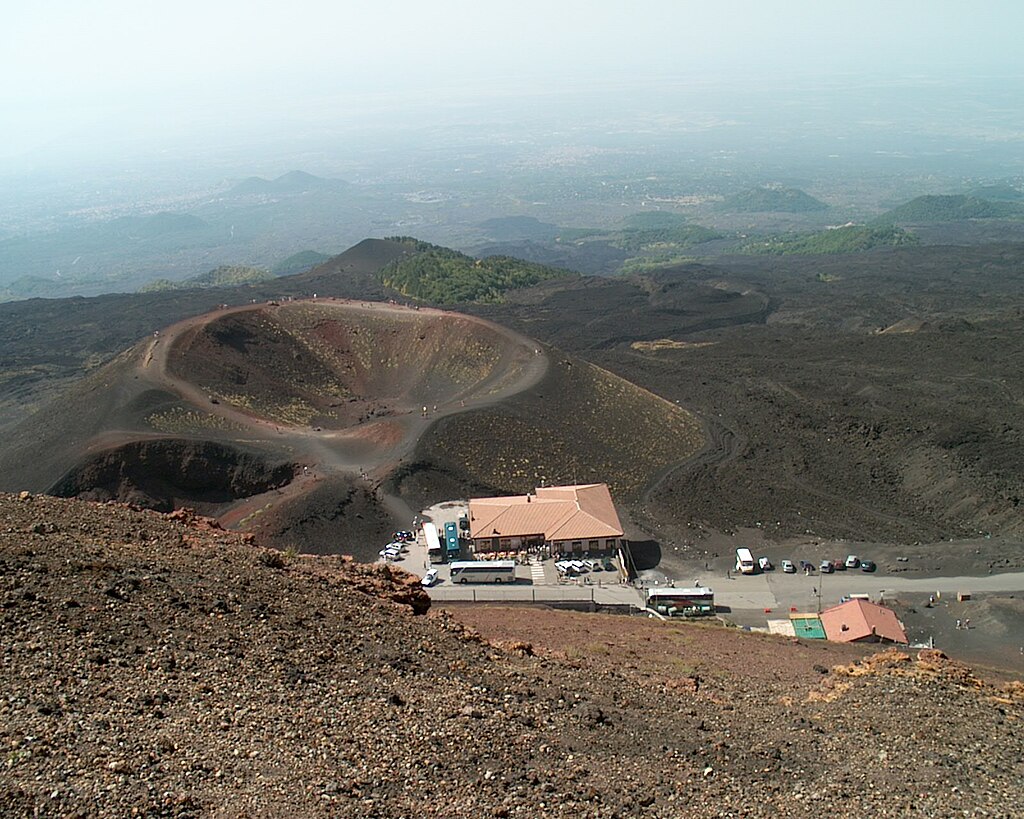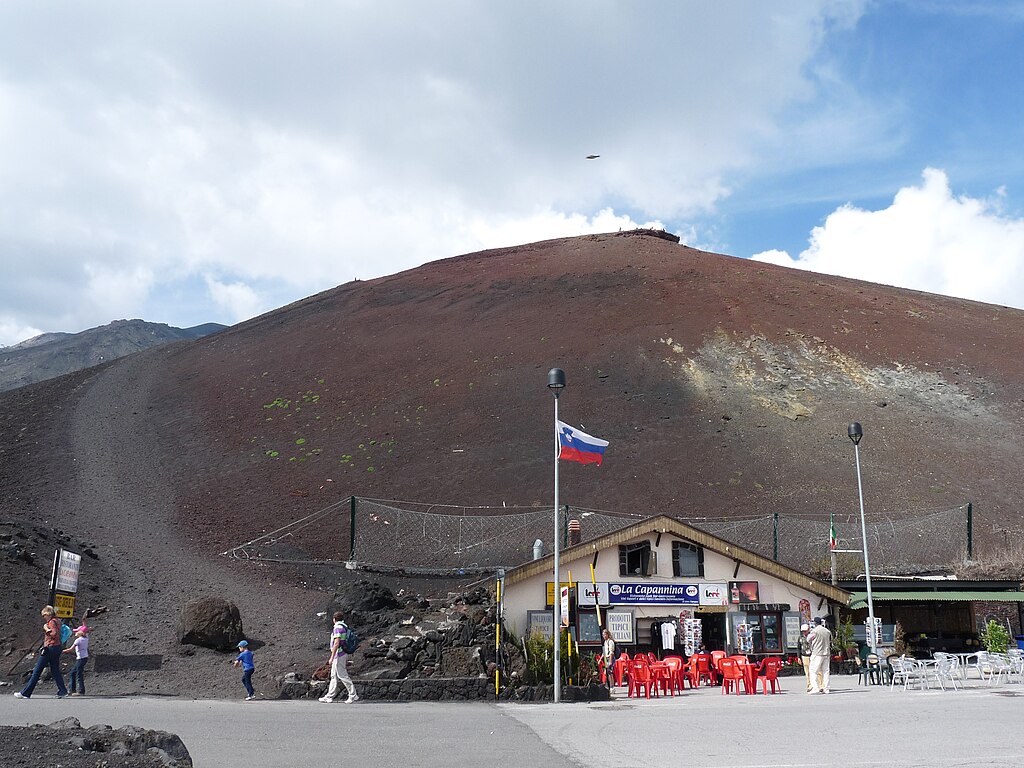Etna Volcano and Summit Craters
Know the Etna volcano, discover its territory and its Natural Park. Let yourself be amazed by the beauty of its lunar landscape, its view of the sea, its volcanic activity, its eruptions. Seeing the summit craters and erupting Mount Etna is an experience not to be missed if you visit Sicily.
How to visit Etna volcano in south Italy? The most active volcano in Europe
The nearest airport to Etna is Catania Airport (CTA) at 31.7 km or 19,7 miles. Nearby airports are Lamezia Terme (SUF) (168.9 km or 105 miles) and Palermo (PMO) (172.6 km or 107 miles).
The Sicilians call it Mungibeddu or ‘a Muntagna and thus recognize in it The Mountain par excellence. Mount Etna is 30 km from Catania on the east coast of Sicily. After the Alps it is the highest peak in Italy despite the fact that being a volcano its dimensions constantly vary over time. Currently it reaches 3340 m above sea level and its diameter is 45 km.
Etna is the most active volcano in Europe. The urbanized part (small and medium-sized centers) reaches 1000 m while the cultivated and wooded areas reach 1500 m (the land is in fact fertilized by volcanic waste and therefore ideal for agriculture).
Read also: Beautiful Cities in Italy | Must visit at least once in your life
The geology and landscapes of Etna are very varied (dense forests of endemic species, desert areas covered with volcanic rocks covered with snow in winter). This is the reason why a large part of its territory has been included in the Etna Natural Park.
In June 2013, Etna was recognized as Natural Heritage of Humanity by Unesco. This recognition means that of the 48 Unesco sites, Sicily has 6.
Excursions on Etna Volcano
Over the years, eruptions have considerably modified the landscape, threatening the populations that have inhabited its base.
Every year, many tourists and curious people decide to take an excursion on Etna and visit its Natural Park. The beauty of the lunar landscape, the view of the sea and the volcanic activity are an experience not to be missed if you visit Sicily or the region of Catania. Travelers can choose between a half-day or full-day excursion with the possibility of adding the unique experience of a visit to the volcano to discover the local wines and gastronomy.
 On the slopes of Etna. René Hourdry, CC BY-SA 4.0, via Wikimedia Commons
On the slopes of Etna. René Hourdry, CC BY-SA 4.0, via Wikimedia Commons
What to see, what to do around Etna? What to visit?
The villages
Several villages surround Etna. These are ideal bases for accommodation and food before tackling the slopes of the volcano. As such, they do not have a crazy charm, but they are not villages entirely dedicated to tourism either. Peaceful villages where it is good to stop for a few moments.
Secondary craters
If the star is the summit of Etna and its main craters, it would be a shame to miss a hike in the secondary craters. There are hundreds of them, some of which are very accessible, even with a child. For many located in the forest, these are magnificent walks with views of the volcano and the sea, in mind-blowing colors, especially in autumn. Refer to the trek and hike around Etna chapter for our suggestions for walks!
Lava caves and tunnels
Little known and yet very impressive, the lava tunnels are a unique opportunity to visit the bowels of a volcano. A very present phenomenon around Etna where eruptions cause very fluid lava flows. As it cools, the lava freezes on the surface, but continues to flow in depth. “Rivers” of underground lava are thus formed, which can sometimes be explored over several hundred meters. It is possible to visit some of them independently if you are equipped and provided you know what you are doing: there are crevasses, passages that can be dangerous. The best is to take a guided tour.
Visit the Etna lava tunnels
Even less known are the ice caves. In particular the grotta del gelo (frost cave) which gives access to the southernmost glacier in Europe. But be careful, to get there, it is a difficult hike (20 km in lava fields) and which requires to be accompanied.
The ascent to the top
A visit to Etna without going to its summit would be a bit like visiting Paris without seeing the Eiffel Tower. It is possible of course, but it remains the highlight of the show. Access can be done in different ways, which is why we have dedicated a specific chapter to this experience.

Lava channel on Etna. Antonio Zimbone – Photoartland, CC BY-SA 3.0, via Wikimedia Commons
How to get to the top of Etna?
1. By car
The road is pleasant in rather good condition and there are not too many turns. It was a little our fear and in the end the climb is quite easy.
You have to climb up to the Sapienza refuge at 1910 meters (everything is indicated on the road). You will also pass in front of the Silvestri crater which is inactive and which you can visit if you wish.
Duration: 15-20 mins
Free access
No difficulty
In Sapienza you will find shops (hiking equipment), snack bar, restaurant and quad and bike rental…
From here you have the choice between:
- Take a funicular to take you up to the Terminal Funivia at 2 500 meters (8 202 ft).
This funicular has a cost: € 31 / pers. Duration of the climb: 14 minutes. The price is quite expensive because the funicular is often renovated or rebuilt following the different eruptions… Open from 9 a.m. to 3:45 p.m. in winter and from 9 a.m. to 4:15 p.m. in summer. Does not work in strong wind or heavy fog. - To walk. Provide good shoes + warm and covering clothes even in summer, water and hiking sticks. Duration 4H.
Arrival at the Funivia Terminal at 2500 meters, you still have the choice between:
- Take an adapted minibus to take you up to the summit at 2 920 meters (9 580 ft). Cost around: € 23. On arrival, you are accompanied by a guide and in a small group you can go around the summit. You can see some fumaroles, snow if you go there between October and April and you can enjoy the superb view of the surroundings.
- Climb on foot or by bike from the marked path: Duration 2 hours.
With children under 10, we recommend taking the funicular + the minibus.
To know that level regulations for the ascent of Etna:
- The visit is free: up to 2 500m (8 202 ft)
- A guide is mandatory: from 2 700 – 2 920m (8 858 ft – 9 580 ft)
- And it is forbidden: above 2 920 m (9 580 ft)
Bar located near the Silvestri craters (Etna, Sicily). On the left, remains of the 2005 lava flow which affected the establishment. Ji-Elle, CC BY-SA 3.0, via Wikimedia Commons
2. Ascent of Etna with an agency
The easiest way but also a bit more expensive. Many agencies offer this excursion from several cities such as Catania, Randazzo, Zafferana Etnea or Taormina for example.
Going through an agency allows you to see more areas thanks to their 4×4 jeep and you will have precise explanations on the different lava flows (years 1981, 2002…), eruptive vents, volcanic cave… and if you want to go beyond of 2700 meters you will be obliged to take a guide.
The excursions are for the day or half-day with meals generally included. The price varies depending on the duration of the hike and what you want to visit (from around € 90€ to € 150 in general…).
Photo credit: PinterPandai, Go Etna, Visit Sicily, CheckOutSam
Photo credit: Castielli (CC BY-SA 3.0) via Wikimedia Commons
Prices and opening hours subject to change without notice.
Main photo description: panoramic view of the Etna Volcano from the town of Catania Etna, Sicily – Italy.




